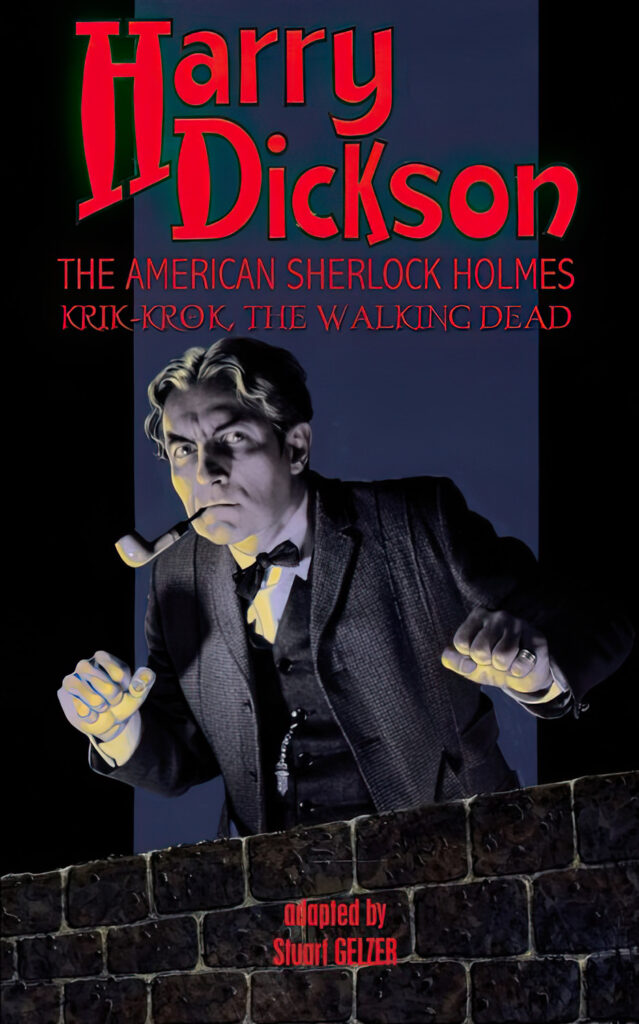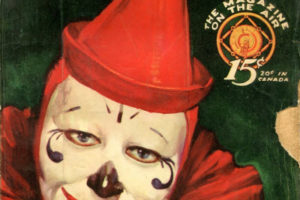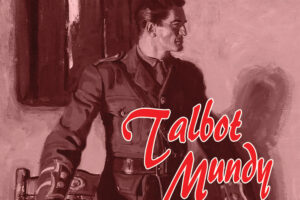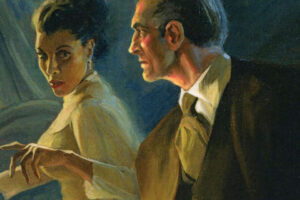Here we are with another collection of original Harry Dickson, The American Sherlock Holmes stories “adapted” from French by Black Coat Press: Harry Dickson: Krik-Krok, The Walking Dead. It contains seven stories from five issues originally published in 1934 and ’35. This is the fourth collection of such stories they have done.
 For those who missed my previous postings, here’s a quick run-down. Harry Dickson was a Sherlock Holmes pastiche from Germany using the Sherlock Holmes name, but aided by Harry Taxson, from 1907-11.
For those who missed my previous postings, here’s a quick run-down. Harry Dickson was a Sherlock Holmes pastiche from Germany using the Sherlock Holmes name, but aided by Harry Taxson, from 1907-11.
In 1927, a Dutch translation was done, with the character renamed Harry Dickson and aided by Tom Wills. Then beginning in 1928, a Belgium publisher did French translations until 1938, and soon asked author Jean Ray to do the translations starting around #20. Around #65, Ray started to write original stories, but as he was an author of fantastical works so too were his Harry Dickson works.
As Dickson was created as a Holmes pastiche, he lives at 221B Baker Street with Tom. Their housekeeper is Mrs. Crown, and they work with Superintendant Goodfield of Scotland Yard. But don’t expect them in every story. I think this is the first time I’ve read a story that had Mrs. Crown in it.
I believe Ray penned these stories, starting off with a character I mentioned in my original posting: the supervillain Krik-Krok, the Walking Dead. Then there is the superhumanly strong King of Midnight. And what sinister secret does The House of Great Peril hide?
We get the following here:
- 146. “Cric-Croc, Le Mort en Habit (Krik-Krok, The Walking Dead)” (1935)
- 105. “Le Roi de Minuit (The King of Midnight)” (1934)
- 145c. “L’Herbe des Monstres (The Herb of Monsters)” (1935)
- 145b. “Le Secret de Bray House (The Secret of Bray House)” (1935)
- 141a. “L’Étoile à Sept Branches (The Seven-Pointed Star)” (1935)
- 144. “La Maison du Grand Péril (The House of Great Peril)” (1935)
- 145a. “Les Tableaux Hantés (The Haunted Paintings)” (1935)
We have a lot of characters in “Krik-Krok.” Some criminals come together in a bar under the direction of their mysterious leader to abduct someone. Meanwhile, a play is in its final rehearsal with the playwright Pericles Holden and his assistant Alex Winthrop, when the leading lady is mysteriously abducted by a man who appears to be the walking dead. He must be Krik-Krok. A banker, Mr. Earl, shows up at the Home Secretary demanding action to find his missing secretary. Or is she something else? As well as making inquires about a Pedro Suarez.
Harry is called in as Scotland Yard are getting no where as more girls disappear, and there are strange thefts as well. All center around Krik-Krok. Soon various folks are being killed. The three criminals from earlier in the story are sent out of town, only to be killed off. Is someone cleaning house?
In the end, Dickson figures it all out and exposes the real crimes, though all the criminals are dead. Mr. Earl’s secretary is found, and everyone lives happily ever after.
In “The King of Midnight,” a man disappears while walking from the train station to his home in a tiny village. There is no sign of him. But why does the government care?
Dickson is called in as the man, Hodenham, was a counterspy. He worked to take care of any foreign agents who came into the country, and he never failed. But his latest assignment was to deal with “The King of Midnight.”
This “King” is a strange fellow. Apparently a white man of superhuman strength, he supposedly came out of Tibet and has been causing problems in India, supporting the independence movement. He is rumored to be coming to England, and so must be stopped. Can Dickson figure it out and stop him with the assistance of Tom?
There are some bizarre twists in this story. Dickson returns to Hodenham’s village because of a possible body, which they find is a dismembered woman’s body. But whose? Then he and others are ambushed, and he finds himself in the clutches of a mad taxidermist who plans on making Dickson his next work. Before he can escape, he realizes the madman pretended to be Hodenham’s housekeeper. Where does this guy fit in? It won’t be until the end when Dickson explains the whole bizarre case. Woo!
“The Herb of the Monsters” is a very short story about the disappearance of an upper-class widow, which reveals a tale of betrayal and sinister revenge.
“The Secret of Bray House” is another shorter story, this one centered around a boy’s boarding school. Several boys go missing and Dickson sends in Tom Wills as a student to help figure it out. Did they run away, or is something else going on. Is Tom in danger as well? Or will they figure out the secret of the school and expose the secret?
Another short story, “The Seven-Pointed Star” begins when a man is given early release from prison due to ill health. Yet it seems to have shown up in his cell after his release. Then the man who was moved into his cell seems to be acting strangely and when he is examining a stone wall, is electrocuted. In examing his body, a seven-pointed star is found by Dickson, with each point being unique. It appears to be a key. So are there six others, and what is their purpose? And why does this secret tie to something left behind by a pirate, Captain Shark, and his officers that endangers England? Can Dickson figure it all out?
In “House of Great Peril,” we have another mystery of betrayal, murder, and revenge. Dickson and Tom pass a store where they see a sinister man. Going into the shop, they find no one, and asking about the man, they learn the owner had died, and left the shop, which includes a home, to his housekeeper who is selling it and has moved to a nursing home. So who was in the house? Looking into it, they discover a threat to a lady and to the housekeeper. And how does Dr. Miehraur, whom Dickson had saved in the Middle East years ago, fit into it as well?
And our final story, another short one is “The Haunted Paintings,” a psychological tale. What secret do they hide or reveal?
In addition to the stories, we get the original covers reprinted in black and white inside the book, and three of the covers in color in postage-stamp-size on the back.
The original tales are all interesting but don’t look for traditional Sherlock Holmes-like detective tales. They actually kind of suck as detective stories. Instead, read them for the bizarre villains and situations that Dickson goes up against.
These are more mysterious action-adventures than traditional detective mysteries. When Dickson reveals it all at the end, you wonder where he got all his info.
I hope we see some more volumes like this. Also, be sure to check out their Tales of the Shadowmen volumes, as they often contain new Harry Dickson stories. To be honest, it’s the new Dickson tales that do a better job of creating detective tales.



